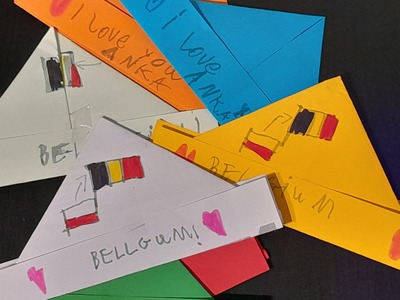
Dedicated to Monsieur Alexander (6 y.o.) and Mademoiselle Victoria (3 y.o.) with big thanks for reminding me how important riddles are even if you speak the language very well.
Why? Because you simply must!
- Riddles are an opportunity to develop focus and listening skills: you are required to listen until the very end as all the elements of the riddle are important and they can help you figure out what the answer is.
- Riddles help to develop cognitive skills while you are guessing as you are required to put together different pieces of information, to understand, to synthesise and to analyse.
- Riddles help to develop cognitive skills even more when you are creating your own riddle as you are required to apply and to evaluate the information you providing to make the riddle challenging and achievable at the same time.
- Riddles are something that we use and enjoy in our L1, from the early childhood and it is only natural that we will try to bring them into our EFL lessons, with kids and with adults.
- Riddles help develop creativity.
- Riddles are fun and they create plenty of opportunities for bonding, in a pair or a group.
- Riddles, in L1, help the kids develop the awareness about how the language works, how the hidden meanings, the homophones, the collocations and this can also be transferred, at least partially, into the EFL or the ESL
- It is obvious that the context of the EFL and the ESL does not always allow for the riddles and their benefits to be used fully and completely even if only due to the limitations of the language level which, in case of some of the young learners, might be as low as A1. This does not mean that they cannot be used. On the contrary, they can be introduced from early on.
- Riddles, regardless of the context, are an opportunity for the students to speak and to produce a mini-discourse.
- In the EFL/ESL classes, it is relatively easy to choose the vocabulary range and the structures for the students, depending on the level and the topic. This range can be easily extended.
How to? Riddles in the EFL classroom
- The simplest version of the game can be played with preschoolers and we usually start simply with guessing ‘the secret word’ which is the card that the teacher and then the students choose and hold close to their chest and the class are guessing. This version is used to introduce the very idea of the riddles. When the kids have become more familiar with the format, the level of challange can be raised and the production maximised by asking the kids to describe the card they are holding in the simplest of way i.e. with the colour, operating within the colours of the objects on the flashcards used (‘It is green‘ or ‘It is green and red‘). With time, more adjectives can be added (‘It is big’, ‘It is small’), the categories (‘It is a toy’, ‘It is a pet’) or even opinions (‘I like it’, ‘I don’t like it’). There is a post devoted to one of the ways of dealing with riddles with the youngest learners. You can find it here.
- The primary (or the more advanced pre-primary) students can start adding simple categories in their discourse (‘It’s a toy’, ‘It’s an animal’, ‘It’s in the schoolbag’) and start describing the word using the relevant structures. For example, with food, we use the following four: ‘It is cold’, ‘It is hot’, ‘You eat it’, ‘You drink it’) and these are the structures that the students know and will need anyway and these particular four can be supported by a relevant gesture. The same goes for the animal riddles set: ‘It is big’, ‘It is small’, ‘It can run’, ‘It can fly’, ‘It can swim’. I also like to add ‘I like it’ and ‘I don’t like it’ even though it does not quite provide enough information for the children to guess the object as the class may simply not know what one of us thinks about it, it gives the student making a riddle an opportunity to express opinion and to make it all more personalised. With the youngest students the teacher can assist production in the beginning by asking questions such as ‘Is it hot or cold?’ or ‘Can it swim, fly or run?’. This set of structures can be developed and extended depending on the students’ age and level.
- As regards the more advanced and older students, the riddles can be made more extensive and more resembling the riddles that the adults and kids play in English as their L1 or the riddles they play with their L1 with the use of simple homonimes or homophones, a wider range of vocabulary or structures or complexity for example by making a list of words not to use when to describe a certain word, describing it with associations (i.e. kids, fun, outside to describe the word ‘playground’), with metaphors (i.e. ‘It is the brain of the computer’ for ‘hard drive’ or ‘It is the opposite of a mountain’ for ‘a cave’) or, even, by a mixture of these (‘Tell me what it is and tell me what it’s not’)
- As regards the material and the support for the teacher one of the following can be used: flashcards, mini-flashcards, a page from the book with words and words and images, a poster, a set of wordwall cards, a list of words.
Happy teaching!